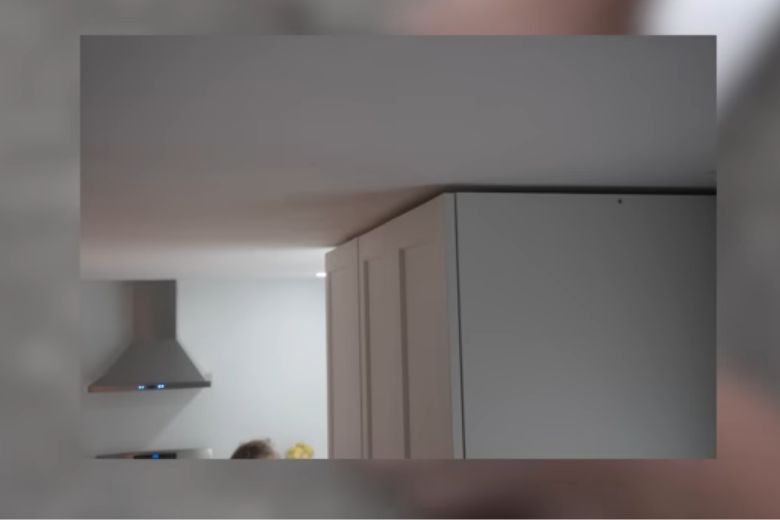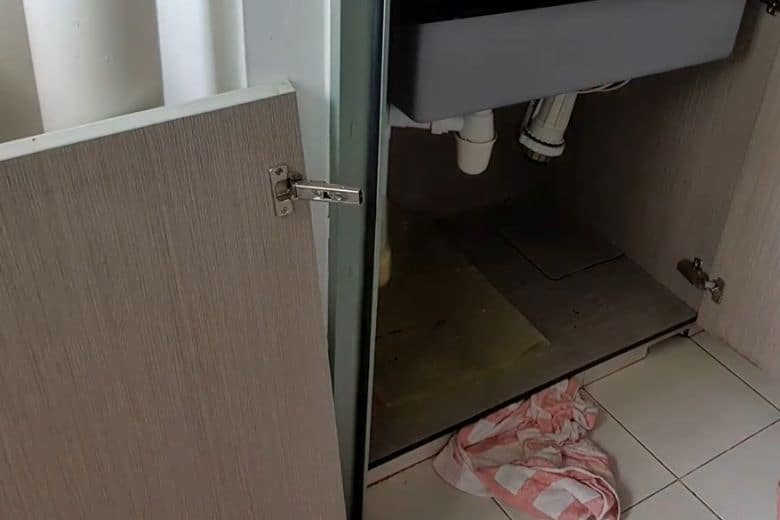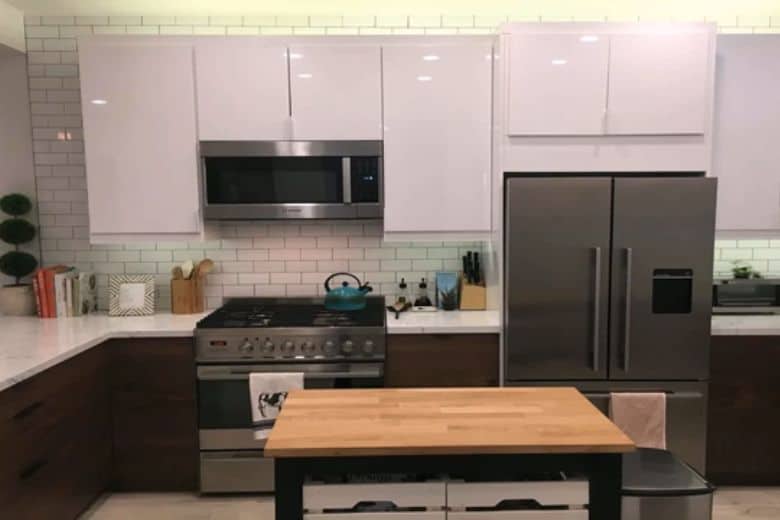The gap between the kitchen cabinet and the wall is a common issue homeowners face. Various factors, such as improper installation or settling of the house over time, can cause this gap. Regardless of the reason, it is significant to address this issue as it can impact the overall appearance of your kitchen and attract dust and debris.
Eventually, the question of how to fill gap between kitchen cabinet and wall has a simple solution. One of the most common ways to close this gap is by using a caulk gun and caulk. Alternatively, you can also use foam sealant, trim, or a magnetic strip to fill the gap effectively. These methods are easy to follow and can be completed quickly with minimal effort.
By the way, there is another method too for this problem. And in this article, we have shown seven different methods to fix the issue.
Have a look!
The Critical Role of the Gap between Kitchen Cabinets and Walls
When installing kitchen cabinets, paying attention to the gap between the cabinet and the wall is essential. This gap can have a significant impact on both the appearance and functionality of your kitchen.
The gap between the kitchen cabinet and wall should allow sufficient airflow but not be so broad that it becomes a breeding ground for dust and debris. Additionally, it should be wide enough to facilitate the removal of the cabinet for cleaning purposes.
Based on these considerations, the ideal gap length is 0.5-1 inch.
By being mindful of the gap between your kitchen cabinets and the wall, you can ensure that your kitchen remains attractive and practical.
How to Fill the Gap Between Kitchen Cabinets and Walls (7 Different Techniques)
Depending on the gap size and category, there are multiple ways to solve the problem. Some methods are expensive, some are affordable, some may last longer, and others may last for a few days. We are presenting all viable alternatives to you.
Let’s find out which you need.
Technique 1: The Simple Screw Fix
This solution, while basic, is an effective way to fill the gap between the kitchen cabinet and wall. The gap often arises due to loose or stripped screws during the installation of the cabinets. To fix the issue, follow these steps:
- Locate all the screw holes near the gap
- Inspect the cabinet to see if there is any way to close the gap without tightening the screws
- If not, use a screwdriver to tighten all available screws
- Replace any stripped screws with new ones positioned in a way that hides the old screw head
- Proper tightening of the screws will result in a good fill of the gap and a secure and stable cabinet.
Technique 2: The Caulk and Caulking Gun Solution

This solution is cost-effective and permanent for filling the gap between the kitchen cabinet and the wall. Using a caulking gun and silicone-based caulk makes it a simple solution for filling small cracks and holes in most surfaces.
Here’s what you’ll need:
- Caulk
- Caulking gun
- Nail or wire for piercing the inner seal of the caulk tube
- Scissors
- Scraper
- Sponge
- Cloth pieces
To fill the gap, follow these steps:
- Clean the wall to remove dust or dirt
- Cut a bead of caulk smaller than the size of the hole using scissors
- Pierce the inner seal of the caulk tube with a nail or wire
- Load the caulk tube into the caulking gun
- Apply the caulk to the gap by squeezing the trigger of the caulking gun
- Smooth out any excess caulk using your fingertip and clean the area with a damp cloth.
Technique 3: The Expanding Foam Solution
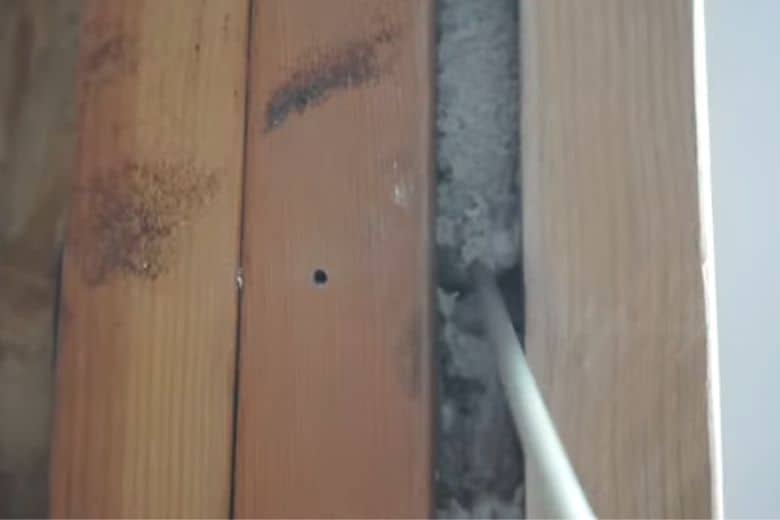
An alternative to caulking is the use of foam sealant is also preferable. This solution is easy to apply, affordable, and effective in filling significant gaps and cracks. The expanding foam solution is a fast-drying and quick-expanding foam-based material that is ideal for filling the gap between the cabinet and wall.
Steps to use Expanding Foam Solution:
- Purchase expanding foam solution from a nearby hardware store
- Cut the solution to the proper size
- Place it inside a caulking gun
- Hold the tip of the caulking gun directly to the open end of the gap between the wall and cabinet
- Squeeze the trigger to fill the hole with foam solution
- Smooth any excess foam solution from the gap using a fingertip
- Clean the area with a damp cloth
In conclusion, the expanding foam solution is a simple and effective solution for filling the gap between a cabinet and a wall. Its fast-drying and quick-expanding properties make it an ideal solution for filling significant gaps and cracks in the kitchen.
Technique 4: The Wood or Trim Solution
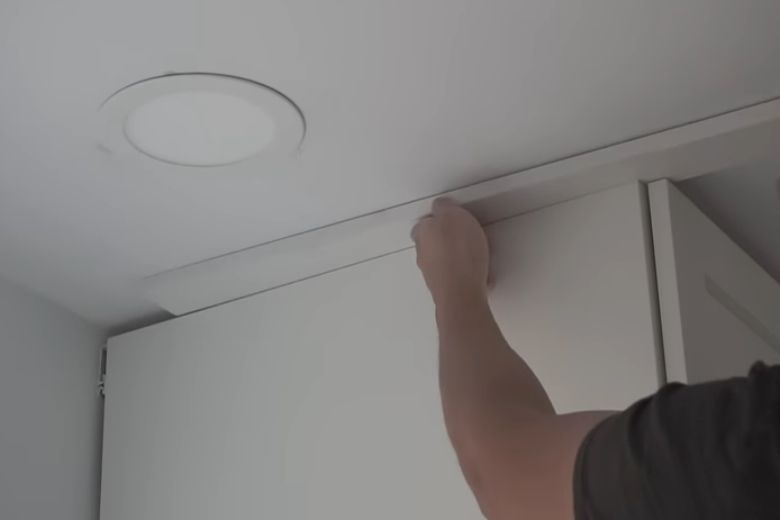
Using wood or trim can also fill the gap between the cabinet and the wall. This method is quick and easy, requiring only a few tools and a short time to complete.
Here’s how to do it:
- Measure the width of the gap using a tape measure.
- Mark the measurement on the wall with a pencil.
- Cut a piece of wood or trim to the same width and length as the gap.
- Attach the wood piece to the wall using screws or nails.
Technique 5: The Magnetic Strip Solution
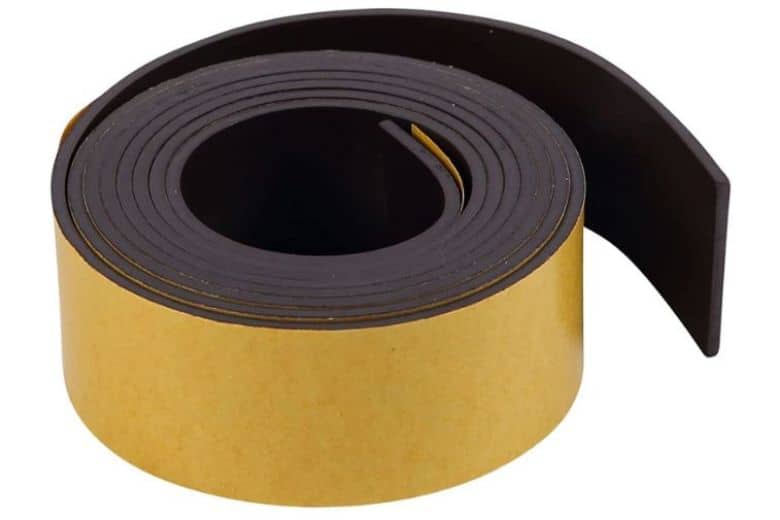
The magnetic strip is an effortless way to fill the gap between a kitchen cupboard and the wall. It does not require any special tools or materials.
Here are the Steps:
- Measure the width of the gap
- Mark the measurement on the magnetic strip using a pen
- Cut the selected strip to the desired length
- Now attach it to the gap with adhesive, and you are done
The magnets of the strip will hold it tightly like a seal, providing protection from dust and filling the gap.
Technique 6: Using Cabinet Liner to Fill Gaps
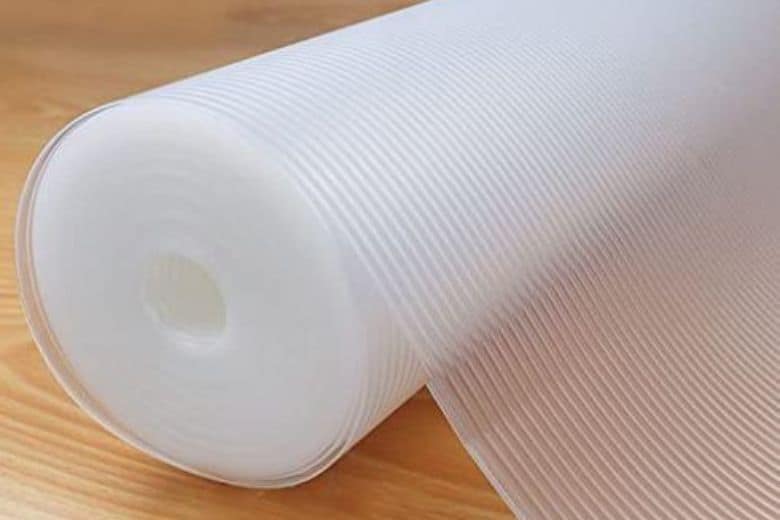
The Cabinet liner system is a simple and affordable solution to this problem of filling the void. This method involves using a liner made of soft, foam-like material that is explicitly designed to fit inside the cabinet. The liner helps to cover the gap and protect it from dust and dirt.
Follow these steps:
- Measure the gap width between the cabinet and the wall with a measuring tape.
- Choose a suitable cabinet liner material. It can be cork, foam, rubber sheets, etc.
- Cut the liner to the desired length, ensuring that it is slightly smaller than the gap width.
- Clean the area between the cabinet and the wall to remove any dirt or debris.
- Apply adhesive to the back of the liner, and attach it to the hole.
- Use a rubber mallet or similar tool to gently press the liner into place, ensuring it is fully seated in the gap.
- Leave the adhesive to dry according to the manufacturer’s instructions.
- If necessary, trim the excess liner material with a sharp knife or scissors.
- Repeat the process for any other gaps in the cabinet.
The cabinet liner method is easy and affordable to fill the gap between the cabinet and the wall. It provides a smooth, finished look to the kitchen while also helping to prevent dirt and debris from entering the gap.
Technique 7: Installing Wall Hinges
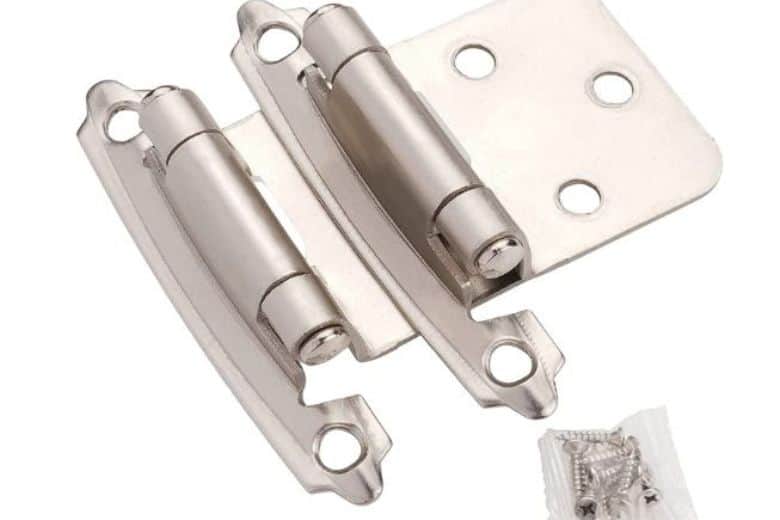
The mounted hinges process uses wall hinges to fill gaps between the kitchen cabinet and the wall. It creates a seamless look and eliminates the need for a cabinet door, especially in small kitchens. The process involves drilling holes in the wall and mounting the hinges with a screwdriver.
Here is the process:
- Measure the width and length of the gap between the cabinet and wall.
- Using a drill, make holes in the wall where you want to install the hinges.
- Place the hinges over the holes in the wall and secure them using screws and a screwdriver.
- Finally, the hinges should now be securely mounted, effectively filling the gap between the cabinet and the wall. The kitchen will now have a seamless look.
Frequently Ask Question
What is the standard gap size between a cabinet and the wall?
Answer: A gap of 1/4 inch is typically left between the cabinet and the wall.
What is the maximum size of the gap that wood fillers can fill?
Answer: Wood filler can typically fill gaps up to 1/4 inch in size.
Is it necessary to use cabinet fillers?
Answer: Yes, cabinet fillers are necessary to achieve a finished, even look in tight spaces, corners, and uneven surfaces in a kitchen.
What is the best way to hide the gap between kitchen cabinets and walls?
Answer: One solution to hide the gap between kitchen cabinets and walls is to use colored caulk for gaps less than 1/8 inch. Another option is to use wood putty that dries hard to fill gaps or cracks, especially if the cabinets will be refinished.
If the cabinets do not require refinishing, you can apply color-matched caulking to the gaps.
Conclusion
Lastly, from the abovementioned techniques, you might already have which one you need. Hopefully, now you have enough knowledge about how to fill the gap between the kitchen cabinet and wall. All for today. Good luck with your project.
Paul Newman is a blogger who writes about plumbing and home improvement. Over the past 20 years, I have worked as a plumber. My passion is to share my knowledge and experience with others to improve their homes.

